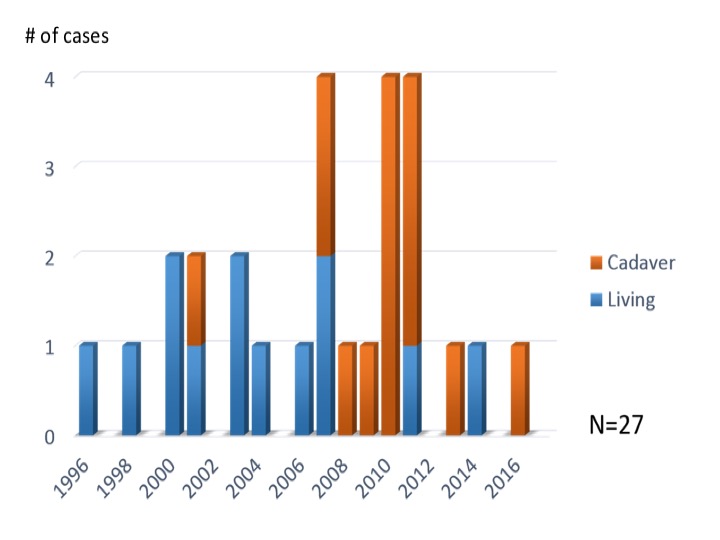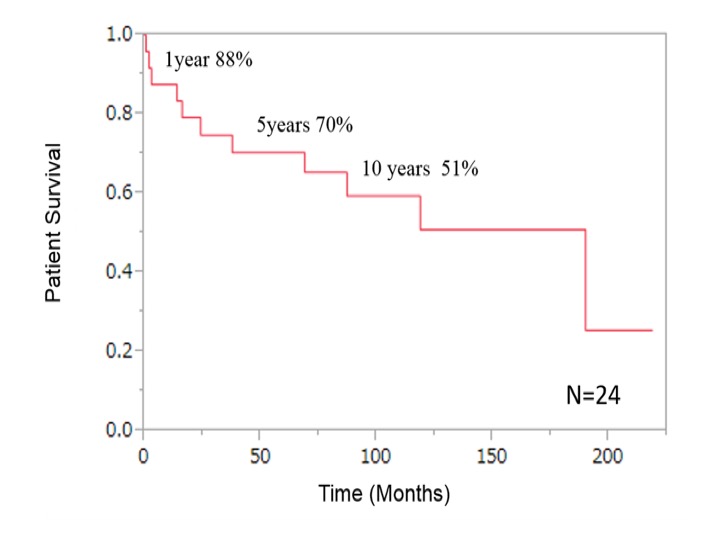Introduction
The prognosis of intestinal failure has improved dramatically in the past few decades with the development of parenteral nutrition. However, PN-dependent patients still have numerous complications. Intestinal transplantation (ITx) is able to significantly improve their prognosis and quality of life. As the ITx has become covered by national health insurance in 2018 in Japan, the number of ITx is expected to increase in the near future. Therefore, we report on the current picture of the ITx for intestinal failure in Japan.
Methods
The ITx have been performed in Japan since 1996. Standardized form were sent to all known ITx programs, asking for information on ITx performed between 1996 and 2017. All programs responded. Patient and graft survival estimates were obtained using Kaplan-Meier method and analyzed with Wilcoxon statistics.
Results
Five institutes provided data on 26 isolated ITx and one simultaneous liver and intestinal transplant in 23 Patients. There were 14 cadaveric and 13 living related donor transplants (Figure 1). Causes of intestinal failure included short bowel syndrome (n=9), motility disorders (n=14), re-transplantation (n= 3), and other (n=1). The median age at ITx was 15.2 years (ranged 0.7 to 35 years). The overall 1- , 5- and 10- year patient survival rates were 88%, 70% and 51%, respectively. (Figure 2). The overall 1- , 5 and 10 -year graft survival rates were 81%, 58% and 39%, respectively. More than 80% of all current survivors discontinued PN with satisfactory performance status.
Figure1

Figure2

Conclusions
ITx has become an effective therapy for patients with intestinal failure who cannot tolerate PN in Japan. Further improvements are expected with early referral due to suitable donor organ and pre-transplant management.
.jpg )